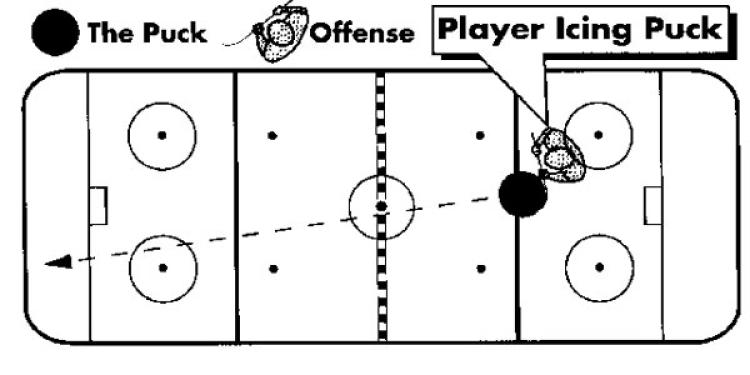The Basic Rules of Ice Hockey – Offside and Icing
Posted: April 13, 2016
Updated: December 11, 2019
The second part of our basic rules of ice hockey guide discusses two important rules that influence the rhythm and the look of the game big-time: the offside and the icing.

The second part of our basic rules of ice hockey guide discusses two important rules. These influence the rhythm and the look of the game big-time: the offside and the icing.
Ice hockey, especially NHL hockey, the biggest level of the sport, provides the perfect sports betting opportunity. The season is on from October to April, games are virtually on every day during this period, so anyone who bet on sports in Canada, the US or worldwide can wager on this competition on a daily basis.
To improve your hockey betting skills, it is better to familiarize with the most important regulations of the game. In the first part of our series about the basic rules of ice hockey, we covered the dimensions of the rink, playing time, number of players, the objective of the game and the faceoffs. However, there is a lot more to talk about. First of all, let’s see the most important rules that regulate the movement of the pack. Through this, we can define the rhythm and tactics of the game.
What is offside in hockey?
Offside is one of the most important basic rules of ice hockey influencing the game. It’s actually pretty simple: an offensive player cannot enter the offensive zone before the puck does. ‘Entering’ means two skates inside the offensive zone, so throughout the game you will see a lot of wingers skating on the blue line, across the rink, waiting for their teammates to pass or carry the puck.

If a defensive player passes or carries the puck back to his defensive zone with an attacking player already there, it doesn’t count as offside. It’s the same when the puck bounces back to the defensive zone from a defensive player. However, only if it is after his teammate shot it away. When an attacking player is carrying the puck skating backwards, and thus entering the offensive zone with two skates before the puck does, it doesn’t count as offside either.
What is a delayed offside in ice hockey?
We need to talk about delayed offside as well. It occurs when the puck is shot or passed into the offensive zone with one or more attacking players offside, but they do not touch the puck. Then officials signals the offside, but once the attacking players left the offensive zone, they can re-enter and the game continues. When the ref calls an offside, the game continues with a faceoff. It takes place from the nearest faceoff point. If the attacking team commits a deliberate offside, the faceoff can move to their defensive zone.
What is icing in hockey?
Icing is another one of the basic rules of ice hockey that can be useful to know for anyone who is involved with internet betting. Icing is when the puck is shot from the defensive half and it crosses both the center line and the opponent’s goal line. This is usually illegal according to basic ice hockey rules. However, if the defensive team is short-handed because of a penalty, they can legally ice the puck.
This is one of the basic ice hockey tactics. A penalty killing unit can use this just fine against the team in power play. They usually just shot the puck away from their defensive zone. They do that in order to be able to substitute players. It relieves the tiring penalty killing unit and kills time. It also makes it harder for the team in power play to line up in their zone. They have to leave the attacking third before being able to enter it legally. That’s according to the offside rule. It is one of the basic ice hockey rules you should already know by this point.
While continuing covering the basic ice hockey rules, we will discuss what checking is and we will also explain the most important penalties that anyone who bet on sports in the EU can witness while watching an NHL game.












